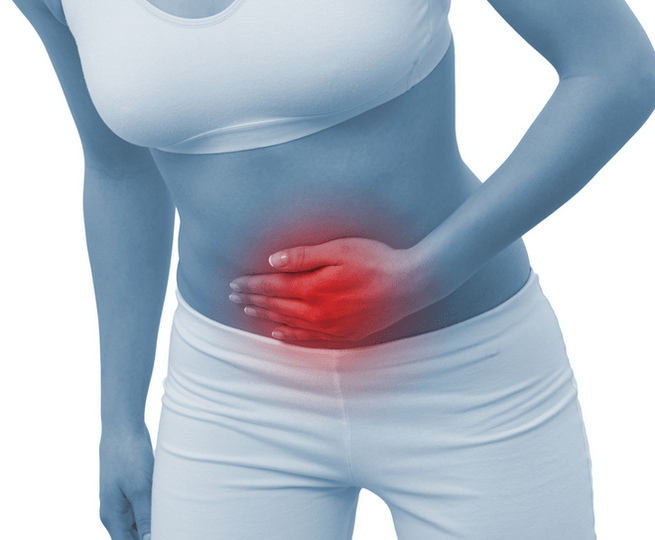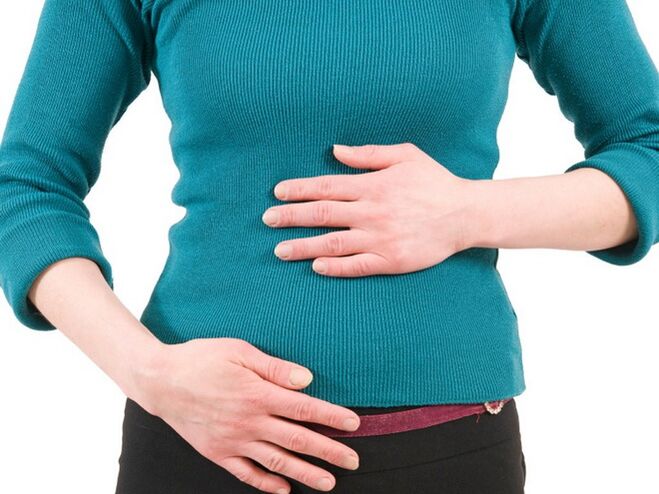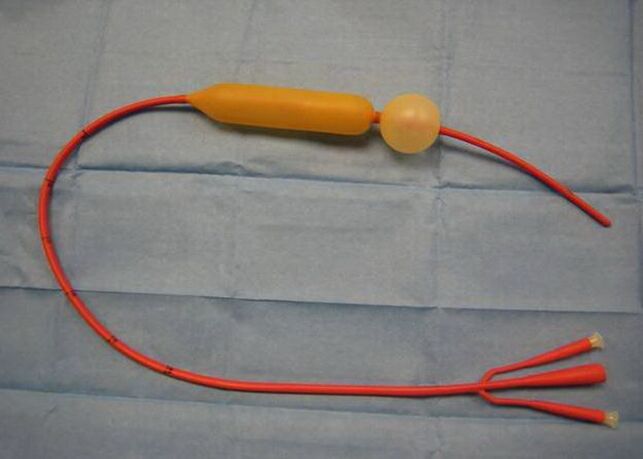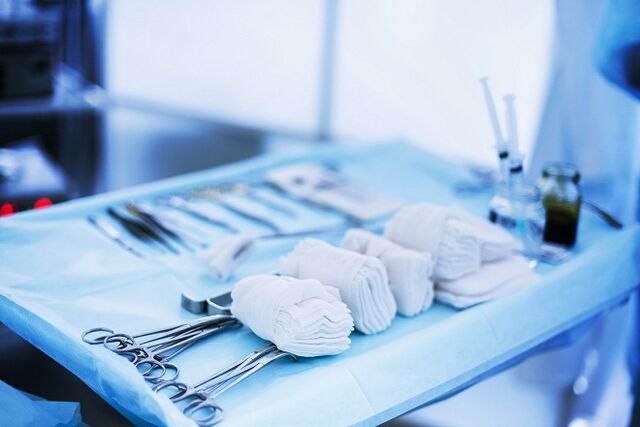Diseases of the veins and large blood vessels are accompanied by significant changes in their physical condition, which negatively affects the quality of circulatory processes. And esophageal varicose veins, which can significantly reduce the quality of life of patients due to deterioration of the quality of digestion and blood flow in the body, require a attentive attitude and timely initiation of treatment. This pathology may be accompanied by the addition of secondary lesions of the digestive organs, or it may occur and proceed independently.
However, with any kind of appearance, dilated veins of the esophagus and subsequently arise varicose veins are accompanied by unpleasant symptoms that make it possible to identify the lesion in question at an early stage of development and initiate timely therapeutic effect, preventing the development of complications. Medical statistics note that this esophageal vein pathology occurs mainly in the male population (women are affected by esophageal varicose veins twice as rarely than men), while the average age when the first manifestations of the disease can be observed is 50-55 years.
The cause of the onset of the disease
The causes of the appearance of esophageal varicose veins may differ depending on the manifestation of the disease, the general condition of the patient's body, in each case the set of causes may vary. However, in any case, varicose veins that occur in the veins of the digestive organs are the result of changes in the general condition of the veins. The reason for the manifestation of such localization varicose veins is excessive blood pressure in the venous circulation, which is most often characteristic of liver cirrhosis.
And the result of such an expansion can be massive bleeding, the danger lies in the absence of symptoms, which can be considered a warning: bleeding in the esophageal varicose veins is often abundant, representing a real danger to the general condition of the patient. Therefore, knowledge of the pathological manifestations of this esophageal vein and measures to prevent this disease will make it possible to diagnose it earlier and initiate an adequate therapeutic effect.
Also, the following patient conditions may be the cause of pathological changes in the veins of the digestive organs:
- congestion is observed in the portal vein;
- portal thrombosis;
- development of malignant goiter;
- esophageal angioma.
Also, the occurrence of the lesions in question may be due to the symptoms and vascular pathology that accompany Randu-Osler disease. All these diseases and conditions are accompanied by negative changes in the circulatory system and digestive organs, which initially affect the general condition of the large veins and arteries of the esophagus and abdominal tissues. Changes in the circulatory system of internal organs such as liver, spleen, gallbladder can trigger the development of varicose changes in the esophagus.
Patient symptoms
The main manifestation of a condition such as varicose veins located in the esophagus is bleeding. These symptoms can be observed in the absence of warning manifestations, against the background of so -called "full health". Signs of impending bleeding can be thought of as a slight tingling in the throat, a characteristic taste of blood when swallowing (salty sour). Blood that forms during bleeding during the development of varicose veins is usually called bright red, possibly resembling coffee powder. The result of such bleeding, which is often prolonged and profuse, is dizziness, weakness, loss of consciousness.

Since the cause of varicose vein severity can be various lesions of internal organs and the circulatory system as a whole, the overall quality of function of these organs is largely determined by both the possibility of developing varicose veins and the symptoms that may accompany these lesions.
Symptoms of considered pathological changes in the digestive organs can be considered as bleeding, which develops during the asymptomatic course of the initial manifestations of the disease. Such bleeding can be insignificant, which does not immediately attract the patient’s attention, or abundant, which has a high risk of death. Varicose veins, which are noted in the tissues of the esophagus and stomach, are most often characterized by the absence of any significant changes that allow timely detection and treatment. However, the disease is one of the most formidable: with unexpected bleeding, which is characterized by a lot of blood being removed, there is a high probability of death for the patient. According to medical statistics, out of five cases of manifestation and severity of varicose veins in the digestive organs, four were patient deaths.
Types and levels of esophageal varicose veins
Today, experts distinguish several stages of development of esophageal varicose veins, each of which has its own developmental characteristics, differing in the list of manifestations and requiring a specific therapeutic effect, which makes it possible to prevent further severity of the pathology. Thanks to modern diagnostic methods, it becomes possible to determine the presence of the disease, its stage and stage of development.

There are the following stages of expansion of abdominal veins and varicose veins:
- first degree, in which there is little change in the lumen of the veins of the body. Esophageal varicose veins, a grade 1 feature, may go unnoticed by patients, as they rarely have definite and obvious symptoms. The esophageal veins have a lumen of 5 mm on average, which is not much different from their healthy condition. However, even at this size, they become less elastic, because even a slight change in their lumen leads to a slight decrease in the intensity of movement of blood through them, and the overall quality of blood circulation in the affected organs is disturbed. Level 1 esophageal varicose veins can be detected during routine examination of this organ;
- the second stage is characterized by an increase in the lumen of the veins in diseased organs up to 10 mm, the speed of blood flow through the veins gradually decreases, which negatively affects the condition of the veins: they continue to lose their elasticity, the walls gradually become thinner, which cancausing bleeding due to the high probability of rupture;
- in the third stage of pathological severity, there is an expansion of the venous lumen in the esophagus and stomach more than 10 mm, the vessels, as a result of its expansion, are located close to each other, and even slightly. trauma can trigger bleeding. Often, in the third stage of the development of the disease, heavy bleeding is noted, which leads to the death of the patient, is a real danger to the life of the patient suffering from varicose veins in the tissues of the digestive organs. .
The above classification of esophageal varicose veins allows us to classify existing lesions on the veins of this organ to a certain extent and begin treatment, which has a positive effect on the patient's condition. Treatment of esophageal varicose veins should be selected by a physician who, based on the study and analysis of the general condition of the patient, selects both the scheme of exposure and variant of exposure, taking into account the characteristics of his organism.
Abdominal varicose veins
Expansion of the veins, due to negative changes in their condition, can also be observed in the abdomen. In this case, just as in the case of esophageal varicose veins, there is a gradual decrease in the degree of elasticity of the vein wall, the occurrence of a high probability of bleeding. Modern diagnostic methods make it possible to detect the pathology in question in time and begin its treatment.
Methods for curing varicose veins, which are localized in the abdominal tissue, are different, but all aim to eliminate the cause of the condition. The National Chemical Center of the Russian Academy of Medical Sciences provides data on the causes and methods of treatment of varicose veins of both the esophagus and stomach:
- treatment of manifestations of varicose veins in the esophagus and stomach according to the methods described in books of leading experts in gastroenterology, differentiation of identified diseases of the digestive organs is carried out, and this technique and a detailed description of such manifestations. rare lesions as operated esophageal pathology, difficult-to-diagnose diseases of the digestive organs provide the largest amount of information needed to devise a scheme of therapeutic effects for both therapists and narrow-minded gastroenterologists;
- Zdenek Marzhatka, one of the most renowned experts in gastroenterology and diseases of the esophagus, accompanied by damage to the veins in his tissues, describes in detail in his writing various methods for diagnosing the disease, types of endoscopy of abdominal and esophageal tissues.

Today, to avoid further aggravation of existing pathologies, more and more modern diagnostic methods are used, aimed at a more detailed study of the condition of the tissues of the affected digestive organs.
Diagnosis of the disease
Methods and options for diagnosing varicose veins arising in the digestive organs (esophagus and stomach) include the following manipulations and diagnostic procedures:
- Fibroesophagoscopy, which allows you to identify the cause of bleeding. Also, this method allows you to determine the presence of a mechanical cause for the occurrence of bleeding, the condition of the esophageal vein wall.
- X-rays of the esophageal wall, which are more informative when using contrast.
Both options for diagnosing the disease in question have the ability to detect the cause of bleeding, determine the condition of the vein wall, and the possibility of rupture of an existing aneurysm. The use of both diagnostic options makes it possible, with maximum accuracy, not only to detect the pathology of the veins and tracts of the esophagus and stomach, but also to obtain the largest amount of available information about the pathology.
Possible Complications
Since varicose veins that occur in the tissues of the esophagus and stomach are very dangerous because of the possibility of bleeding, the possibility of complications of this pathology should be taken into account. Significant damage to the digestive organs, severity of liver cirrhosis are the most dangerous consequences of this venous pathology.
Methods of treatment
The therapeutic effect to eliminate the risk of bleeding in the event of damage to the veins of the esophagus and stomach should take into account the stage of the pathological process, the general health of the patient, his body's susceptibility to ongoing therapeutic effects. Modern medicine is constantly improving the method of affecting the esophageal vein, which makes it possible to quickly eliminate the most obvious pathological manifestations.
Today, an integrated approach is used in the treatment of considered pathologies of the esophageal and abdominal veins, consisting of traditional, surgical and medical methods of exposure. Each method has its own characteristics, can be used for specific symptoms and prescribed by a doctor. The course of treatment should be monitored at all levels by the attending physician, who, if necessary, will make the necessary adjustments in a timely manner and prevent the possible risk of complications.
Traditional methods
First of all, when using traditional treatments for esophageal varicose veins, the bleeding is stopped, which can be fatal. This will also make it possible to carry out additional methods of therapeutic action, which will ensure faster regeneration of damaged tissue and create the necessary scarring at the site of damage to the esophageal vein.
To compensate for hypovolemia and prevent the occurrence of hemorrhagic shock, a significant dose of vitamin K (calculated by the doctor) is injected into the patient's body, as well as infusion of frozen plasma (1-2 doses, intravenous transfusion is. Performed).
Conservative methods
In case of severe bleeding, which is a real danger to the patient’s life, a rubber inflatable probe can be used, which gives a quick stop to the bleeding. With the help of the probe, the bleeding ducts are pressed, which stops the movement of blood. For example, the investigation of such a device, the Sengstaken-Blackmore investigation, is popular in eliminating bleeding during the development of varicose veins in the digestive organs, in particular, the esophagus. Also used is such a type of probe crimp, which is widely used in the treatment of esophageal varices with bleeding and bleeding stomach ulcers.

When the probe is inserted under the site of a vein rupture, the esophagus can be washed with hot water at a temperature of 40 ° C - this step often stops active bleeding and stabilizes the patient’s condition. However, in case of recurrent bleeding and at their high intensity, in parallel with the use of probes, it is recommended to carry out intravenous and intramuscular administration of substances that also contribute to stopping the bleeding. Calcium chloride 10-20 ml is injected intravenously. Do not use drugs for administration, actions aimed at increasing blood pressure.
Treatment with an endoscope
Since this esophageal vein disease is most often diagnosed during endoscopic examination, endoscopic hemostasis can be prescribed to eliminate the most characteristic manifestations of the lesion (elimination of bleeding). This method involves suturing the affected area to the veins in the esophagus, and this variant of the therapeutic effect is superior to that of injection sclerotherapy because of the more pronounced positive dynamics of treatment.
Carrying out endoscopic treatment is marked by rapid cessation of bleeding, prevention of possible recurrence of the disease. The drug, used in the implementation of endoscopic treatment of bleeding in esophageal and abdominal varicose veins, is given intravenously at 50 mcg, its action is aimed at increasing visceral vascular resistance, which allows stabilizing the patient's condition, preventing overactive blood loss. . This medication is preferred over other medications that may be given to stop venous bleeding from the esophagus because it has fewer side effects, even with long -term use.
The use of an endoscope involves the use of a special endoscopic examination of the esophagus, which is most often prescribed for bleeding, the cause of which is unclear. This technique is very popular because of the high efficiency of this diagnostic method and the positive dynamics of good treatment (ligation is performed), carried out using an endoscope. Endoscopic examination of the veins of the esophagus and stomach shows itself well at any stage of development of the pathological process; Also, this method makes it possible to detect even the earliest manifestations of diseases of the digestive system in connection with blood circulation in the veins and to identify esophageal varicose veins.
Use of balloon tamponade
Endoscopic exposure methods also involve the use of such variants to stop bleeding from the esophageal vein, such as balloon tamponade. It consists of the effect at the site of damage on the veins of a special clogging agent. However, with severe bleeding, balloon tamponade may not be very effective; additional drugs should be used to stimulate the regenerative process in the venous wall tissue.
The classification proposed today for the division of esophageal varicose veins, and allows you to determine the scheme of the most effective therapeutic effect. Taking into account the peculiarities of the level of the current pathological process, the body's perception of the drugs used and continuous treatment control give the attending physician the opportunity to make timely adjustments and achieve the best results in stopping bleeding and stabilizing the patient's condition.
Surgical intervention
Excessive bleeding, which poses a threat to the patient’s life as a result of significant blood loss, may require surgery.
Surgical intervention may be prescribed for large blood loss, where intravenous administration of plasma, blood and blood substitute fluids does not bring clear positive results. There are several types of surgery for significant blood loss. Each of them is prescribed according to the instructions determined by the doctor.
Today, the following types of surgical interventions are recognized as the most effective:
- imposition of special bandages made of medical rubber. Such damaged vein ligation allows you to quickly stop blood circulation, stop blood loss, which can lead to a significant deterioration in the patient's condition;
- surgeries such as bypass surgery lead to a decrease in blood pressure in the veins and, consequently, stop bleeding. During shunting, the liver tissue is affected, a special stent is inserted into the center of this organ, which creates a kind of bridge between the liver tissue and the esophageal tissue, which lowers blood pressure. The hepatic and portal veins, which have such "bridges, " receive reduced pressure, which leads to the cessation of bleeding;
- Splenorenal shunting is a type of bypass surgery that helps prevent the possibility of bleeding when varicose veins are detected in the tissues of the esophagus and stomach.

The options listed for surgical intervention allow you to eliminate the increase in blood pressure in the esophageal veins damaged by varicose veins. All were performed under x-ray control and gave the greatest positive effect of manipulation to stop bleeding.
Medical treatment of varicose veins
There are also variants of medical effects on the body to treat the early stages of esophageal varicose veins. The choice of type of drug is determined by the doctor after examining the patient's body, determining the stage of the current pathological process. When carrying out this type of therapy, indicators such as the susceptibility of the patient's body to the drugs used, the possibility of allergic reactions should be taken into account.
The most commonly used in the treatment of this disease are the following drugs with significant effects on the veins:
The medications listed have several possible side effects that should be considered when prescribing them.
Treatment with folk remedies
The reliability of medicines and traditional medical methods has been tested for centuries, but their effectiveness is not high enough to independently overcome the manifestations of esophageal varicose veins. Traditional medicine can be used as a maintenance medicine, to increase the rate of the recovery process in vascular tissue. For example, with a high probability of bleeding, it is recommended to take decoctions and infusions of herbs that have a hemostatic effect. It can be a collection of nettles, thyme, highland birds.
Treatment with folk remedies is also possible at home, which is very important for disease maintenance therapy, at the stage of remission. Since esophageal varicose veins are serious lesions, which pose a serious danger to the health and life of the patient, it is necessary to take into account the degree of effect of the selected traditional medicine. Home treatment is carried out under the constant supervision of a doctor.
Do you need a diet
When diagnosing varicose veins in the digestive organs, the issue of choosing a diet should be considered one of the most important, as it is on the food that enters the patient's body that his well -being and indicators of sustained therapeutic effect largely depend. . The recommended diet for esophageal varicose veins involves adherence to a number of workable rules, which involve the exclusion of certain foods and the inclusion in the daily menu of certain products that heal the body as a whole and the esophagus in particular.

The diet for esophageal varicose veins should exclude the following foods and ingredients from the patient's diet:
- seasoning;
- large amounts of table salt;
- excessive amounts of oils, especially those of animal origin;
- fried, canned, smoked foods, which will irritate the esophageal tissue and can cause bleeding.
The diet for varicose veins of esophageal tissue, as well as for liver cirrhosis, should include more boiled, stewed foods, perfectly fermented dairy products will support the necessary microflora in the intestine, without placing an excessive burden on the digestive system as a whole. Fractional nutrition in small portions, control of the number of calories to avoid excessive effects on the digestive system will prevent the severity of existing pathology and maintain the health of the esophagus.
Methods of disease prevention
As a preventive measure for varicose veins, it is important to exclude bad habits, including smoking, drinking alcoholic beverages, fast food snacks.
Regular examination by a gastroenterologist will help identify vascular disease even in the early stages of pathological development and begin its treatment.
Healthy lifestyle
Maintaining a healthy lifestyle should be mandatory for those who want to maintain a healthy digestive system.
Prevention of vascular disease, use of vitamin preparations to maintain high levels of immunity, and examination by a physician are important components of success.
Physical training
To maintain vein tone, in order to maintain good digestive system function, you should regularly do the minimum physical exercise required.
Walking, light jogging, exercise therapy exercises can be considered as good preventive measures in the development of varicose veins.























